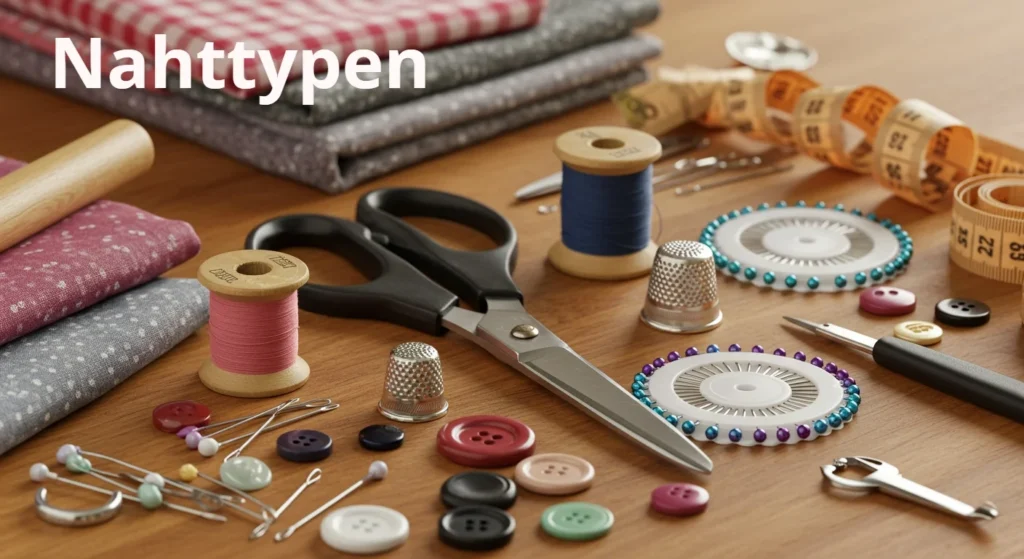When it comes to sewing, tailoring, or any form of textile work, Nahttypen — the German word for “types of seams” — play a crucial role in determining the strength, appearance, and functionality of a garment. Whether you’re a beginner in sewing or an experienced designer, understanding different seam types can elevate your craftsmanship. This article explores what Nahttypen are, their various kinds, and their applications in the world of fashion and textiles.
What Are Nahttypen?
In the simplest terms, Nahttypen refer to different kinds of seams or stitches used to join two or more pieces of fabric. Each seam type has its unique structure and purpose, influencing the durability and visual appeal of the final product. Seams not only hold fabrics together but also enhance comfort, prevent fraying, and contribute to the overall design aesthetics.
In sewing terminology, Nahttypen can be broadly divided into functional seams, which are essential for structure, and decorative seams, which are used mainly for embellishment or design enhancement.
Common Types of Nahttypen
There are numerous seam types used across industries, but a few are more common and widely applicable. Below are some of the most frequently used Nahttypen and their characteristics.
1. Plain Seam (Geradstichnaht)
The plain seam is the most basic and widely used type. It involves sewing two pieces of fabric together with the right sides facing each other, then pressing the seam allowance open or to one side. This type is ideal for lightweight to medium fabrics and is commonly found in shirts, dresses, and trousers.
2. French Seam (Französische Naht)
A French seam is a refined type of seam that encloses raw fabric edges, making it perfect for delicate or sheer materials. It provides a neat, professional finish without requiring an overlocker. This type is often used in lingerie, blouses, and luxury garments to achieve a clean interior appearance.
3. Flat-Felled Seam (Doppelte Kappnaht)
A flat-felled seam is highly durable and often used in jeans, workwear, and outerwear. It involves folding one edge over the other and stitching it down, creating a strong and flat seam that resists fraying. The double stitching adds both strength and visual detail.
4. Overlocked Seam (Versäuberungsnaht)
The overlocked seam is made using a serger or overlock machine. It trims and finishes raw edges simultaneously, preventing fraying and ensuring a tidy, professional finish. Overlocking is ideal for knit fabrics and garments that require flexibility, such as T-shirts and activewear.
5. Topstitched Seam (Steppnaht)
A topstitched seam serves both decorative and functional purposes. It involves stitching along the edge of a seam on the outer side of the fabric, providing reinforcement and aesthetic appeal. Topstitching is common in denim, coats, and fashion accessories.
6. Lapped Seam (Überlappungsnaht)
In a lapped seam, one fabric edge overlaps the other and is stitched in place. This seam type is widely used in non-fraying materials like leather, vinyl, or felt. It provides a flat, clean finish and can also serve as a decorative feature.
Choosing the Right Seam Type
Selecting the right Nahttypen depends on several factors, including:
-
Fabric type: Lightweight fabrics work best with simple seams like French seams, while heavy fabrics need reinforced ones like flat-felled seams.
-
Purpose of the garment: Everyday wear may require stronger seams, whereas formal or decorative clothing might focus more on appearance.
-
Sewing tools available: Some seams require special equipment such as a serger or twin needle for best results.
-
Skill level: Beginners often start with plain seams before experimenting with more complex ones.
Understanding these elements helps ensure that each seam not only enhances the garment’s durability but also complements its style.
The Importance of Finishing Techniques
No matter which seam type you choose, finishing the edges properly is key. Techniques such as zigzag stitching, binding, or serging help prevent fraying and extend the life of your garment. Finishing touches can make even simple Nahttypen look professional and refined.
Additionally, pressing seams after sewing helps them lay flat and appear neat. A well-pressed seam highlights craftsmanship and contributes to the overall structure of the design.
Conclusion
Nahttypen are much more than just stitches — they are the foundation of quality garment construction. From the simplicity of a plain seam to the sophistication of a French or flat-felled seam, each type serves a distinct function in the world of sewing.
Whether you are tailoring a formal outfit, designing casual wear, or creating home décor, choosing the appropriate Nahttypen ensures both functionality and beauty. By mastering different seam types, you not only strengthen your sewing projects but also express creativity through fabric and thread.
In the end, understanding Nahttypen is a blend of art and technique — a vital skill that turns simple fabric pieces into timeless creations.
